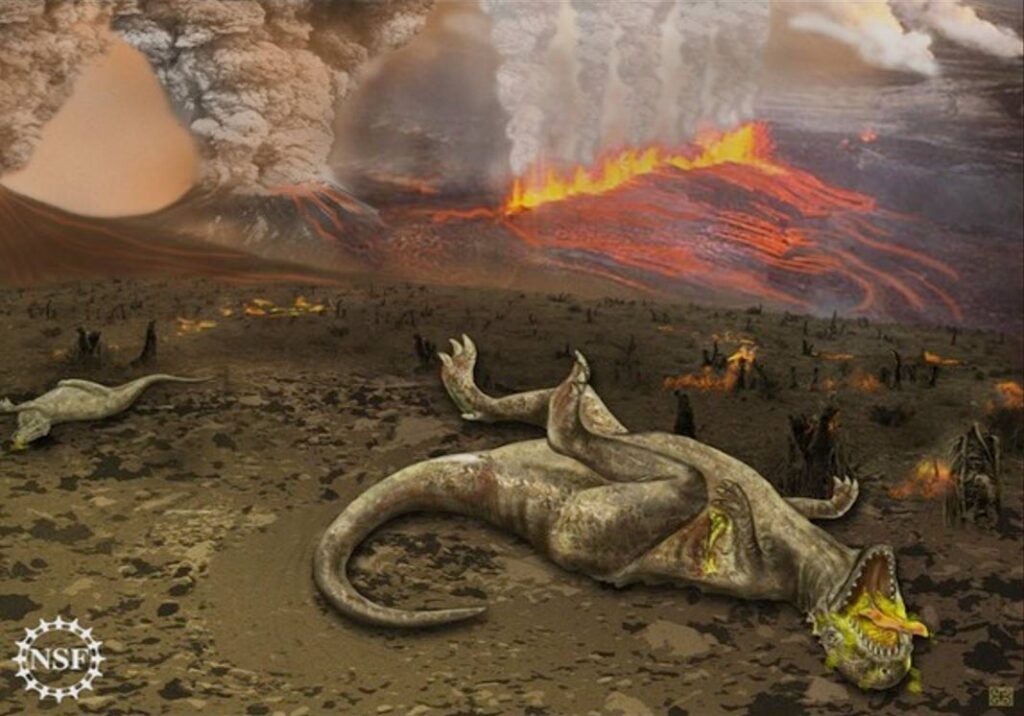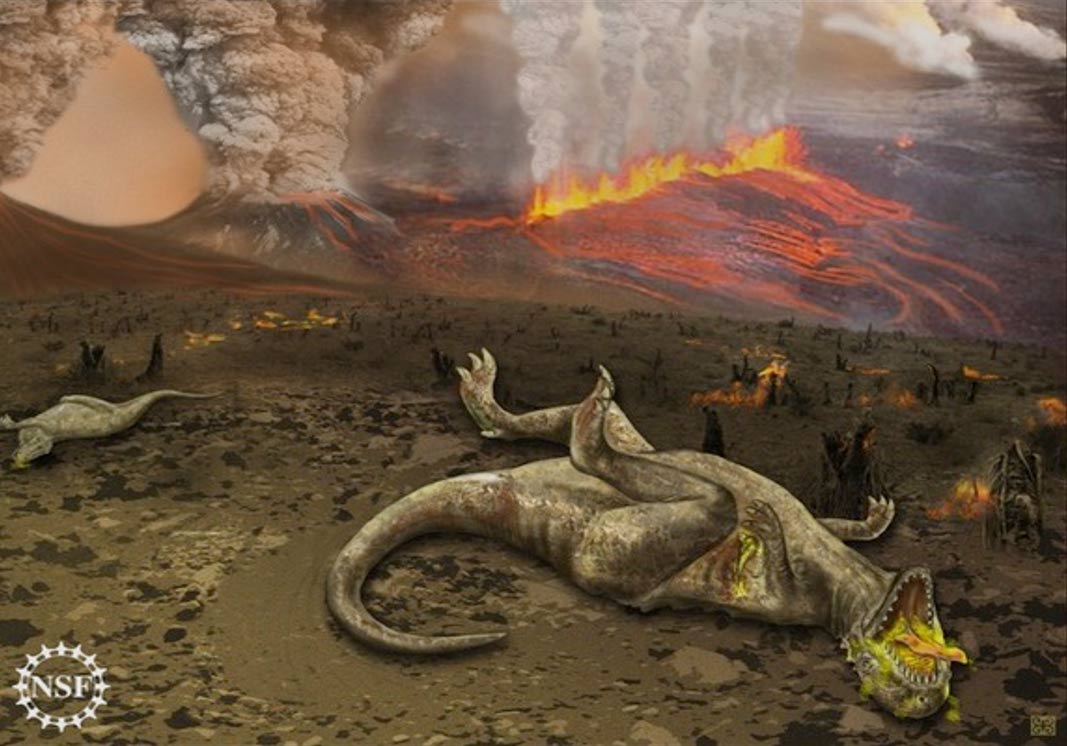

Associations between unseen forces in space and terrific cataclysms on Earth are being made by scientists who hypothesize that dark matter might be behind ancient mass dinosaur extinctions, and may contribute to future catastrophes.
The most infamous of the “Big Five” dramatic mass extinctions of the dinosaurs occurred 66 million years ago. It is attributed to a mountain-sized space rock impacting Earth, causing instant and long-reaching disaster on a planetary scale, reports science magazine Scientific American. Such ancient impacts can leave lasting impressions on our planet which remain visible as geological surface scars, as seen in the Yucatan Peninsula and many other locations around the globe.

Impact event, illustration. Does dark matter lead to destructive impacts and volcanic activity on Earth, leading to mass extinctions? Public Domain
Researchers have traditionally pointed to meteor impacts, ash-spewing volcanic eruptions, and gigantic hurricanes as the smoking-guns of ancient mass extinction, but now scientists are looking further afield and wondering if the meteor strikes and climate-destroying geological events on Earth might be triggered by outside, previously undetected forces.

Pingualuit impact crater in Nunavik, northern Quebec, Canada. The almost perfect circular crater made by an ancient meteor strike now contains a freshwater lake. Public Domain
Some scientists theorize that our solar system’s cyclical travels through a thin disk of dark matter may trigger comet bombardments and planetary upheaval which then cause mass extinctions – and these extinctions can allegedly be observed to occur roughly every 26 million to 30 million years on Earth.
Science journal Nature reports, “In the past, researchers have noticed this association, and suggested that perhaps clouds of dust and gas, and possibly even dark matter, in the Milky Way’s plane might be somehow shaking comets off their orbits and causing them to slam into Earth, triggering these mass extinctions.”
Dark matter is not well understood by scientists, and as such its alleged impact on our solar system and planet remains a hypothesis. The elusive matter is said to be an invisible substance which flows through and interacts with the universe, and is described as “the cosmic scaffolding upon which galaxies coalesce” by Scientific American. It is reportedly detectable by observing its gravitational pull on other objects.

Artist’s impression of the Milky Way galaxy. The blue halo of material surrounding the galaxy indicates the expected distribution of the mysterious dark matter, which was first introduced by astronomers to explain the rotation properties of the galaxy and is now also an essential ingredient in current theories of the formation and evolution of galaxies. European Southern Observatory (ESO)/Wikimedia Commons
According to The Telegraph, biology professor and geoscientist Michael Rampino of New York University suggests that dark matter might alter orbits of asteroids and comets, and contribute to heating of the earth’s core, triggering geological events such as volcanoes, earthquakes, hurricanes – culminating in mass extinction. Ominously, it is suggested that dark matter might concentrate in the planet’s core, generating heat which may cause everything from magnetic field reversals to changes in sea levels.
Rampino’s research has been published in the journal Monthly Notices of the Royal Astronomical Society.
Scientific American explains the potential cycle of prehistoric devastation:
In the early 1980s, the University of Chicago paleontologists David Raup and Jack Sepkoski found evidence for a 26-million-year pattern of mass extinction in the fossil record since the Great Dying of the Permian-Triassic. This 26-million-year periodicity overlaps and closely aligns with the Big Five extinctions, as well as several others. In subsequent work over the years, several other researchers examining Earth’s geological record have replicated Raup and Sepkoski’s original conclusions, finding a mass-extinction periodicity of roughly 30 million years that extends back half a billion years. Some of those same researchers have also claimed to detect similar, aligned periodicities in impact cratering and in volcanic activity. Every 30 million years, give or take a few million, it seems the stars align to make all life on Earth suffer.
As little is known about dark matter at this point, only further research can reveal what it is, and how it definitively affects our solar system, and thus our planet and ourselves. To avoid going the way of the dinosaurs, it behooves us to learn.




